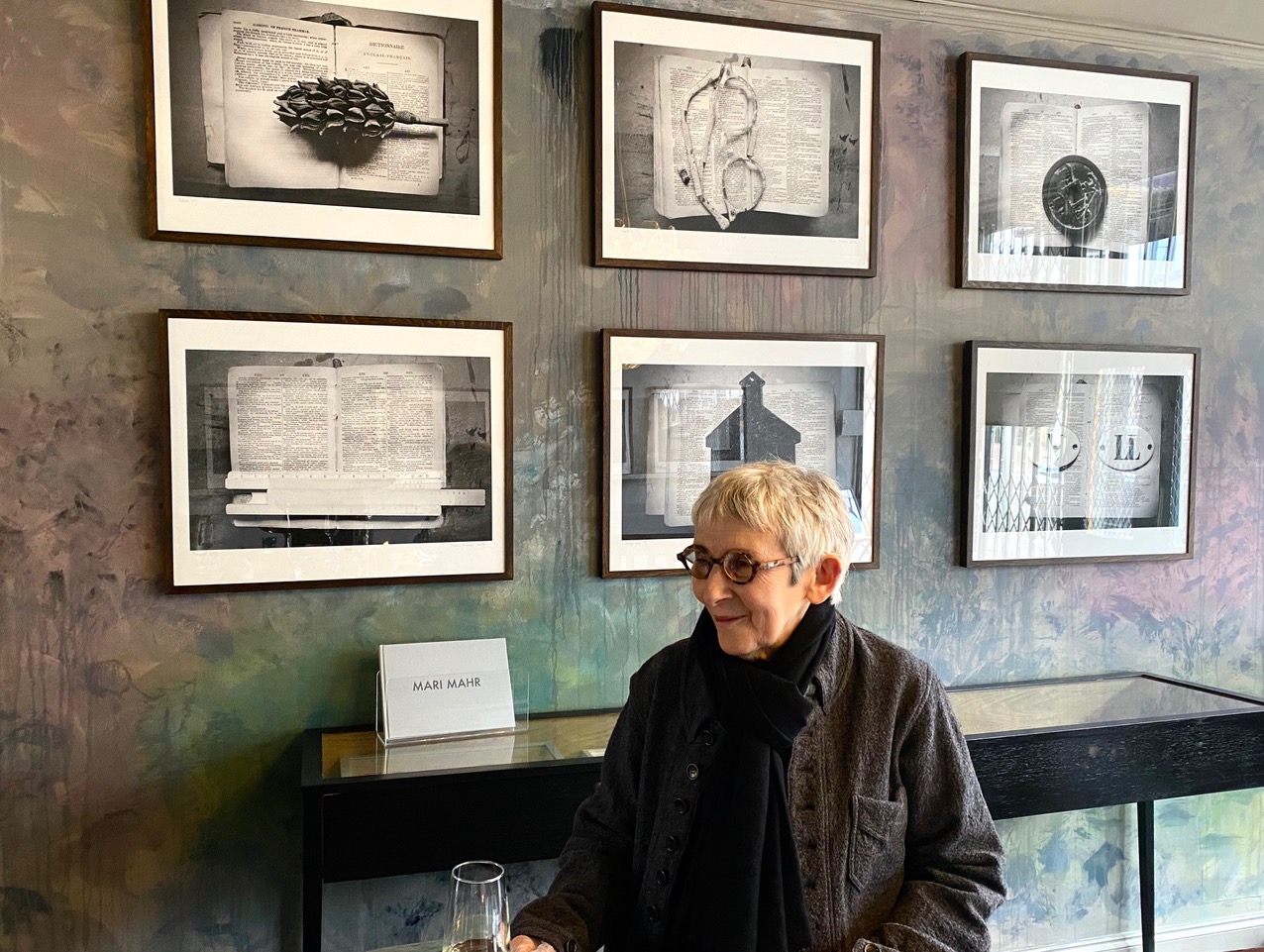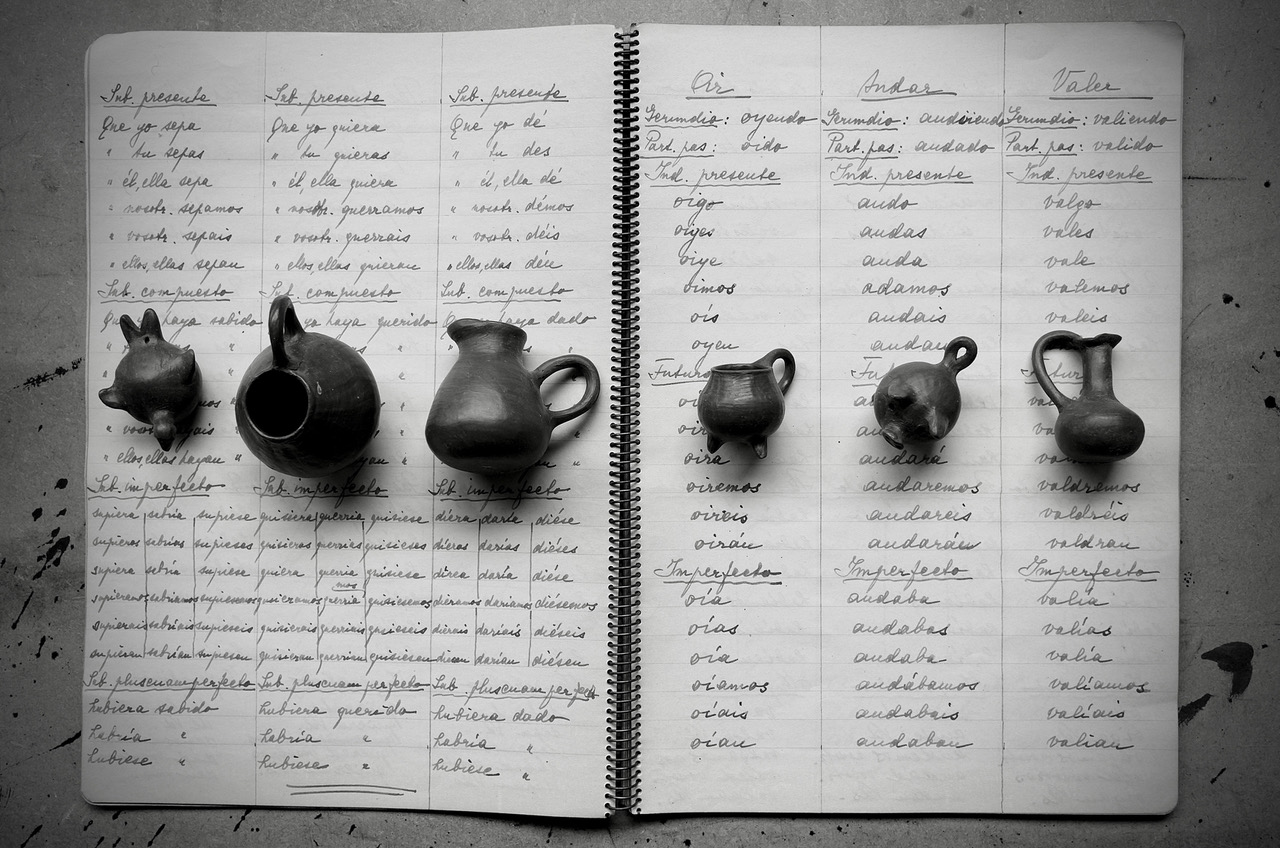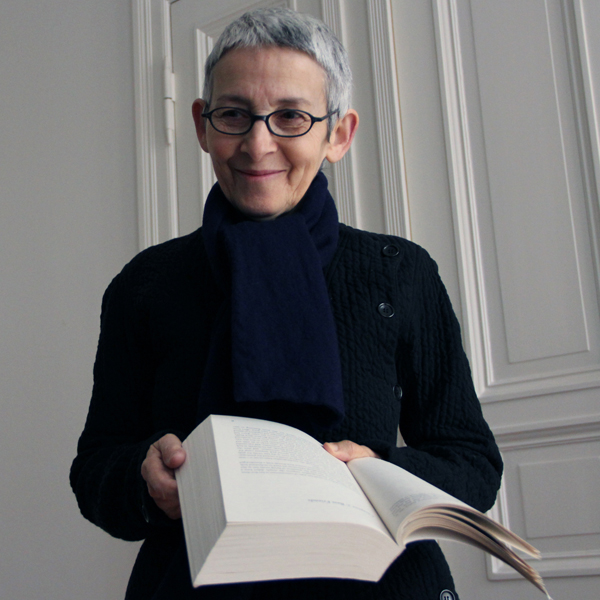Words, Words, Words is a solo exhibition by legendary photographer Mari Mahr
Whimsical, tender, elegant; it is difficult to summarise the work of the extraordinary photographer and Contemporary Heroine Mari Mahr in a few words. However, words are central to Mari’s practice; Tales from Within A Small Suitcase (2002) – the title of one of her series – evokes the importance of storytelling to her artistic intentions.
Mari’s latest work will be on display at the Boécho Gallery in London from the 12th of April. A supplementary catalogue, produced to accompany this solo exhibition, encompasses her complete oeuvre and celebrates her prodigious career. In addition, the catalogue includes illuminating essays by Zelda Cheatle, alongside insight into the purpose of contemporary photography. Mari’s current exhibition, Words, Words, Words… comprises fifteen photographs belonging to three distinct chapters: the Diccionario De Bolsillo Español-Inglés, the Dictionnaire Français–Anglais, and Words, Words, Words….
The catalogue opens on an image from an earlier series entitled Between Ourselves: My Daughter, My Darling, providing a window into Mari’s chimeric and dramatic sceneries. In an attempt to pass her history on to her daughter, she designs a shrine decorated by family photos and set up against a Chilean landscape. This photograph relates to a compound series which honours the women in her life, from the homage to her beloved mother and her political ideology in The Dreamers’ Birthday to the glamorous faceless portraits of her grandmother in Upon Her Return. Time for Sorrow 2 is a tribute to both her mother and their origins, indicated by the Chilean flag.
Mari’s autobiographical roots are intrinsic to her aesthetic. A photograph by the well-known photographer Brassaï shows her Jewish-Hungarian parents in Paris, where they married; her father was a left-wing architect, educated at the Bauhaus, and her mother was a linguist. Born in Santiago de Chile, Mari grew up in Hungary, where she studied journalism and worked as a press photographer finding inspiration in the French Nouvelle Vague (New Wave) films. Her series Life Chances depicts the many cultures from her background and symbolises the quintessence of belonging, a building block of her artistic practice. The ‘black and white country’ she once dreamed of emerges through the shiny marbles she used to play with as a child on the Chilean streets; an ironic scene of knives and forks at the bottom of a staircase embodies the etiquette that obsessed her grandmother; exquisite flowers placed against a pillar are a reminder of a garden competition she took part in as a young girl in Hungary.
When she moved to London in 1972, the struggle of an unknown language prompted Mari to develop a new code and regain her lost confidence. She turned her lens towards what was recognisable to her and populated her art with things connected to the places and people she loved. Eventually, studying at the PCL gave her the chance to shift to a more experimental approach, compared to the conventional photography she was used to. This new approach is evident in the mesmerising works Georgia O’Keeffe and Lili Brik.
Documenting what she wants to recount, rather than what she sees, Mari constructs enormous architectures of memory, developing intimate conversation from inherited personal objects. However, her work includes a powerful collective dimension which references ‘community’ more broadly, particularly her home country. Mari’s work is not pretentious; on the contrary, it sets itself far away from any revolutionary claim. Her images pair a strong sense of individuality with global awareness, addressing universal questions about belonging. The objects depicted, which she associates with the different places, cultures and languages she comes from, are the vessels of her history. On the whole, Mari’s work is an ideal example of tableau photography and ‘hyper-narrative’. It is not just about an instant; it is about focusing on a visual starting point, which is not in front of the camera but behind it – in the artist’s mind and emotions. Her work exemplifies the idea that constructing a photograph is about pausing and reflecting; it is a laborious process of braiding and elaborating upon diverse concepts to tell a story, not just a record of the immediate present.
Predicting the manipulation techniques of digital post-processing, Mari sets scenes in which composition and frame, lighting and control, are vital elements. The pattern is always the same, but the random connections and the inventiveness are unique. Purging the image of anything unnecessary to the storytelling, she builds the plot by gradually juxtaposing different layers. Usually, Mari blends artificial photographic backgrounds with objects in the foreground, altering conventional perspective. Her personal yet kaleidoscopic photography is rooted in her documentary experience, but – contrary to documentary conventions – she uses black and white to achieve a sense of distance between ‘then’ and ‘now’.
Mari’s otherworldly series about China, On The Second Day in China (1988), explored the symbolism of everyday objects and their mysterious connections. She is captivated by the differences between languages and ideas, words and representations. The variable significance of words is a recurrent theme in Mari’s work; her fascination for dictionaries, encyclopaedias, and the perennial ‘search for words’ expresses her multicultural education and vivid curiosity. In 1991, she received her first digital camera from the National Museum of Photography and embraced the experimental capacity of technology. In 2020 she created the series, New Places, New Codes: Tales of an Expatriate, a result of her immersion within previously unexplored culture. Alongside her adventurous approach, Mari’s frequent return to the ‘solitary pleasures’ of relics and glossaries perpetuates cohesion.
In “Words, words, words…” Mari sculpts her images by using pages from dictionaries as a backdrop for objects meticulously selected for the foreground. This series represents a spontaneous, cryptic game; although the choices of words and objects appear accidental, they recreate contemplative, poetic landscapes steeped in domesticity and familiarity. In one image, Mari uses pages from a Spanish exercise book to represent the time her grandmother was learning to speak Spanish, a gesture of welcome as her family returned home to Hungary from Chile. ‘Indeleble’, ‘Nadie’, ‘Trabajoso’, ‘Centuplo’, ‘Forma’, and ‘Visionario’ are the titles of the six images in Diccionario De Bolsillo Español-Inglés, while ‘Reve’, ‘Lunette’, ‘Attorn’, ‘Regret’, ‘Allegorique’ and ‘Volter’ are the titles of the six works included in the Dictionnaire Français–Anglais. Emerging from the old pages is a selection of found objects: a handprint, a pair of broken glasses, a home-shaped cutter, a series of buttons and miniature amphoras, a collection of unknown instruments, and an ‘N’ and ‘LL’ – two letters of the Spanish alphabet. These ephemera are not words, nor are they objects; they are surreal bridges to realms of truth and invention.
Perhaps the most striking aspect of Mari’s work is the commemorative, almost spiritual dimension of her artistic practice, alongside her candid recognition of her ethical responsibility as a photographer. Photographs and series such as About Photography, Ordered Interiors and Another Paragraph on the Island highlight her deeply respectful attitude towards peoples’ lives and cultures, as revealed by the motif of burning candles – a ceremonial aspect which also emerges in the series Presents for Susana. Considering photography a ‘present’, Mari creates a child’s portrait wherein totemic embellishments wondrously appear. This series and many others, such as A Time in the South Pacific, disclose the powerful influence of Latin-American magical realism and Jewish storytelling traditions on Mari’s practice.
Describing her series Sky, Mari writes, ‘the sky is the perfect place to be, because it represents all the places at the same time’. Epitomising the diversity of her work, the notion also encapsulates her cosmopolitan spirit. In the last few years, Mari has combined her own photographs with her husband’s drawings, furthering her composite process. Once again she welcomes change, and the results are as triumphant as ever; within Mari’s artwork, everything is part of the same fluid and allegoric visual vocabulary – an enchanting arrangement created by a spectacular pioneer and artisan of photography.
all images © Mari Mahr
Words, Words, Words at Boécho Gallary
Until June 26, 2021
Book available in Hardback, Linen £80 or Soft cover £40
















